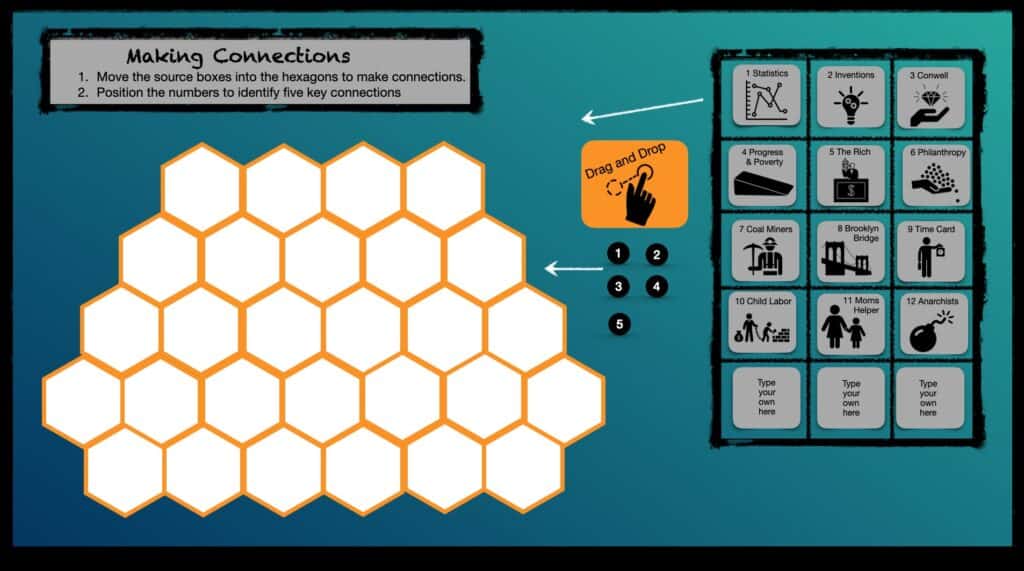Featured image credit: Photographer Lewis Hine Nov 1913. Caption: Fourteen year old spinner in a[?] Brazos Valley Cotton Mill at West. Violation of the law. Matty Lott runs six sides. Source
Overview
We will continue our examination of historical thinking skills based on the work by Stanford History Education Group. (SHEG). This curriculum teaches students how to investigate historical questions by employing reading strategies such as sourcing, contextualizing, corroborating, and close reading. This session will use a selection of documents from the late 19th century to explore corroborating in the context of the rise of industrial America.
Class Session | Zoom Video
Students will work in teams to explore the documents in Progress and Poverty in Industrial America (available free at iTunes). Also available online as a Microsoft Sway.
We will be using the 11 sources to create a graphic organizer that responds to the essential question: “How do we evaluate the social costs and benefits of technological innovations?” In additional will will add a twelfth perspective (anarchists) using Albert Parsons SAC.
Students will be supplied with the “Hexagonal Thinking Corroboration Tool” in Keynote. Corroboration prompts are from SHEG. This thinking tool inspired by this post. Keynote design adapted from here.

After our review of the 19th century documents, we will consider the same essential question in the context of contemporary America.
Assignment 6 | Lesson Pitch 20-A6
This assignment will begin our preparation for lesson to be delivered in a future class after break.
To get some peer feedback before you get into detailed planning, this coming week you should prepare both a post and a brief pitch presentation that outlines your initial ideas for the activity. Hopefully we will give you good feedback that will make your lesson better.
Your post is the more SPECIFIC part of your pitch. If you were selling me a car – this would be the techs specs. It should include:
- good title and featured image
- target audience and setting – what class and how might this be used?
- content – what will be studied? Why is it interesting or important?
- process – what will you do – what will students do?
- resources for lessons – what do you plan to provide the students?
- Delivery considerations – how do you plan to deliver this remotely?
Your presentation is the FUN part of pitch. If you were selling me a car, this would be the test drive where you are pitching me on how cool it would be to own it.
- it does not need to include every part of the written post.
- it should be more visual than text based.
- it’s the big idea of your lesson – why do you want to teach this lesson, why is it interesting to you?
- what’s the essence of what students will be doing.
- it should be delivered “Pecha Kucha” style and consist of maximum of 20 slides. Each one timed to automatically advance at 20 seconds. You should aiming to “talk less, show more.” You will need to rehearse your delivery to match the slide timing. So your presentation will last no longer than 400 seconds. (6 minutes / 40 seconds)
Resources
If you want to plan long range – our presentation calendar looks like this
Oct 5: Pitch your idea – presentation and post
Oct 19: Your formal post sharing your finished teaching activity (some activities will be delivered)
Oct 26 and Nov 11: Remaining activities delivered
How to set up a Apple Keynote presentation so it auto advances every 20 seconds


![Fourteen year old spinner in a[?] Brazos Valley Cotton Mill at West. Violation of the law. Matty Lott runs six sides.](https://edmethods.com/wp-content/uploads/2020/09/Fourteen-year-old-spinner-in-Brazos-Valley-Cotton-Mill.jpg)




